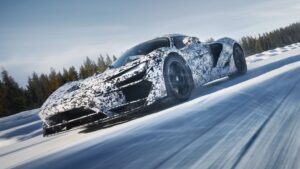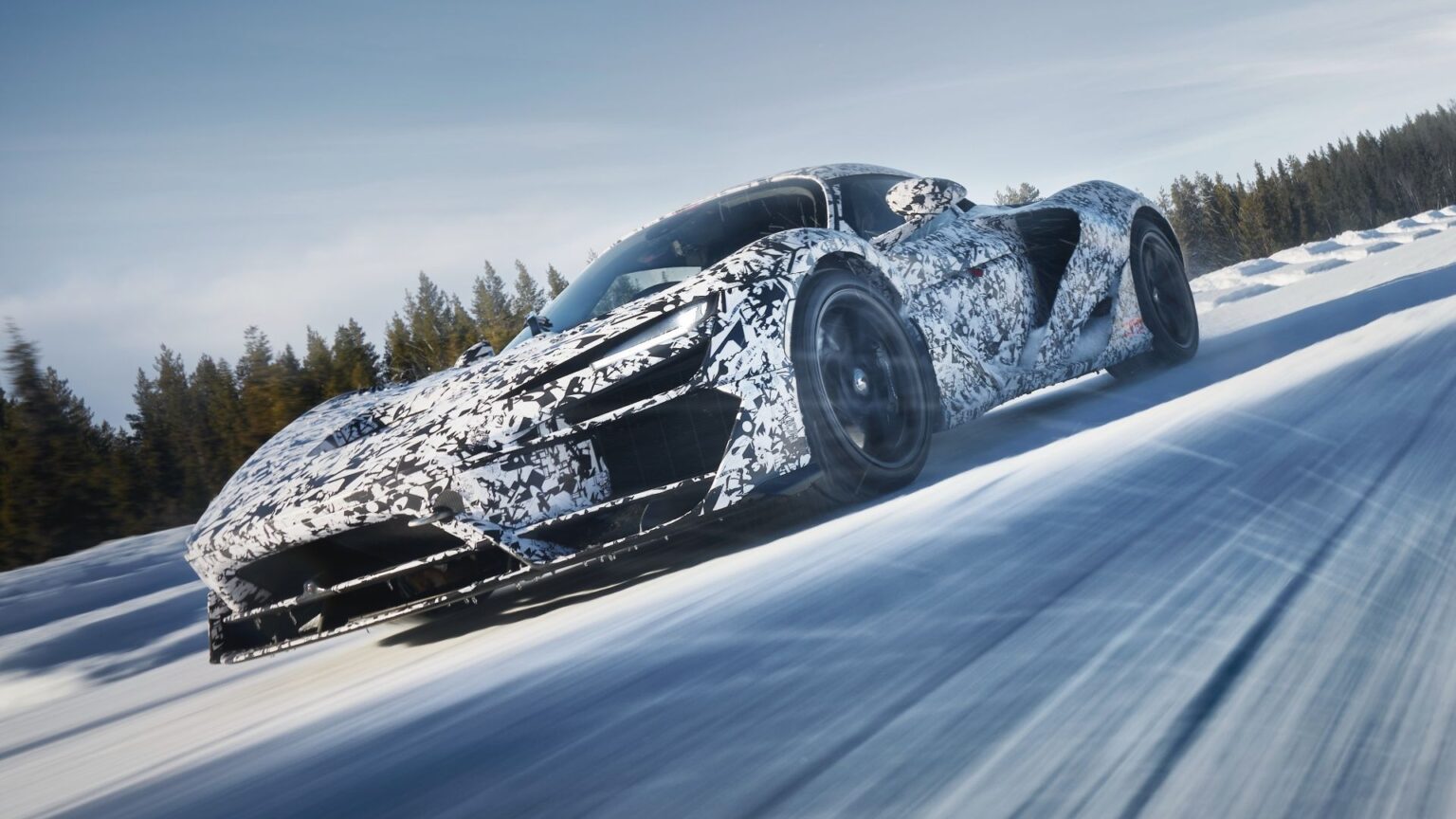Most vehicles go through extensive cold-weather testing before they go on sale. The McLaren W1, however, is not most cars. It’s a hybrid hypercar of the highest order, the successor to the iconic McLaren F1 and brutal P1, and its owners will probably never let theirs touch a flake of snow or a shard of ice. Nevertheless, McLaren decided the W1 must perform as well in extreme conditions as it does on a warm track in southern California.
Where’s the best place to do that? The Arctic, of course, where the average temperature is below freezing, and it can drop to -60° Farenheit in the winter. Thankfully, McLaren recorded its testing of the W1 in the Arctic Circle and produced a video for us all to see what this car can do at the edges of its performance envelope.
The W1 Is A Monster On Snow And Ice
For those unfamiliar with the bonafides of the McLaren W1, let’s go over them one more time. This is a mid-engine, rear-wheel-drive hypercar with a longitudinally mounted twin-turbocharged 4.0-liter V8 engine and battery-electric hybrid system hooked up to an 8-speed dual-clutch transmission. Total power output is pegged at 1,258 horsepower and 988 pound-feet of torque, which McLaren claims is good for a 220-mph top speed and a 0-60 mph time of just 2.7 seconds. It is designed to be the fastest accelerating McLaren ever made as well as the fastest McLaren road car around a track.
We can tell you right now that if we owned a McLaren W1, we’d never use it in conditions like these.
Now, when testing such a formidable machine in an environment such as the Arctic Circle, there are certain things on which the automaker’s engineers focused their attention. For instance, can the W1 accelerate and maintain grip on low-friction surfaces such as ice and snow? How do the internal combustion engine and battery-hybrid system handle extremely low temperatures? And, perhaps most practical of all, what happens when ice and snow build up on the car’s body itself?
As you can see in the video above, McLaren engineers are confident the W1 will handle itself well on the Arctic’s frozen tundra. One thing we noticed is that engineers did fit their test vehicle with high-performance winter tires, which have deeper treads and more pliant rubber than the summer performance tires the car likely leaves the factory with. Tires are the number one factor when it comes to maintaining grip on ice and snow, so a fresh set would help any hypercar immensely in these conditions.
TopSpeed’s Take
We can tell you right now that if we owned a McLaren W1, we’d never use it in conditions like these. The fact that McLaren ensures it will perform in them anyway, however, would be of great comfort. It tells owners that your million-dollar investment is more than just a trailer queen. Even if it ends up parked in a billionaire’s climate-controlled warehouse, this car is a real machine that will perform in any condition, from the Arctic to Death Valley. If you want to drive it, it will be there for you and not let you down.
That’s not something that could be said of supercars from the 1980s and ’90s. In some cases, you were lucky if you could even get them to start, let alone move of their own accord, in extreme conditions. Yet today’s most powerful cars, such as the McLaren W1, can be driven daily like a Honda Civic, including through a blizzard.
Read the full article here



